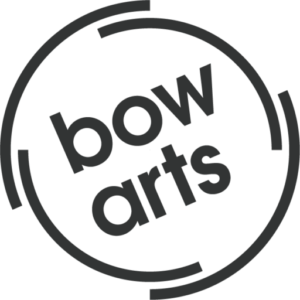Adele's family story of working in the Jewish tailoring industry in the East End
My paternal grandfather escaped from Pultusk, Poland after his young brother was killed in a pogrom in 1907. Grandpa Hyman was married with two young boys, the youngest being my father, aged less than two. In Pultusk my grandfather was a men’s tailor. He joined a cousin who was already in the East End of London, found a job as a trouser maker and worked for two solid years to save the money for his wife and two sons to join him.
My grandmother Mary was the daughter of a small mill owner. She left her large family behind and travelled an arduous journey with her two toddlers to the UK, via cart to Warsaw, train to Bremen and boat to Tilbury Docks, London.
They settled in Philchurch Street near Cable Street, where a year later she gave birth to a baby girl who died at only one-year-old. She then had two more boys.
My father and his two younger brothers all left school at 14 to follow in their father’s footsteps, working in the garment industry. The eldest brother became a cabinet maker. My father worked at Pasha on Commercial Road where he was a machinist on women’s coats. One Pasha brother owned one floor and another owned the floor above. My dad’s brother worked on the other floor and it was close enough that my father could come home for lunch. Working on the machine was literally back-breaking work and he had to take early retirement because of the effect the work had on his back.
On my maternal side, Alec and Ann Victorovitch came together from Konin, Poland in approximately 1897. They too settled in the East End where my grandfather first became a drayman for Truman Breweries, delivering beer to the various pubs around the East End. He eventually bought his own barrow and had a fruit stall in Watney Market. His son and one daughter went into the business with him.
My mother left school at the age of twelve and went into the garment industry, following in the footsteps of her eldest sister. She became a felling hand, working in some of the large coat manufacturers. She gave that up when I came along and while I was in primary school she did piecework, working at home until all hours.
A runner brought anywhere from one or two dozen jackets to her at home, where she either sewed on fur collars and cuffs or felled coat bottoms and sleeves. She would look at the bundle and estimate how long it would take to finish and tell him when to come back to pick them up. She was always finished on time. I remember well the smell of the garments that were delivered to my mother and that all the work was done by hand. My mother was an expert felling hand and I can still see her tiny, neat stitches. Each time I sew (I learned by unconsciously watching her and have always done most of my own alterations) I think of her and how difficult it must have been to stay up late at night finishing her bundle, not knowing the exact time it would be picked up in the morning. She usually sewed the linings into jackets, some of which were trimmed with fur collars and cuffs, and that was partially hard on the eyes and fingers. Local sweatshops liked using outside workers as they didn’t have to give them holiday or sick pay.
Not only did my mother teach me to sew but also to knit and embroider. I still have all the different threads that she used which were kept in a biscuit tin. When needed, I also use her thimble which must be over sixty years old and I also have my dad’s tailors chalk and tape measure.
My mother’s family always lived in or around Hessel Street Market until a bomb fell nearby and the authorities declared the premises unsafe. In 1940 they moved to the other side of Commercial Road, off Fieldgate Street. My mother passed away relatively young, still in the East End. By this time I was married and living in New York with my American husband and child. My father came to live with us in the 1980s until he died of old age.
My grandmother died in the original family home in Philchurch Street, near her beloved Hessel Street Market and my grandfather passed away at almost ninety at the Highbury Home for the Aged. My dad inherited his father’s Singer sewing machine with treadle. Occasionally my father used it to do alterations on our clothes that couldn’t be done by hand and the whole house reverberated from the sound.
I have now been in New York for almost 50 years where I have followed a career in education. I return to London every few years and although I stay in the North-West London suburbs I make a point of visiting my beloved East End at least once every trip, wandering the streets and haunts of my childhood.
Once an East Ender, for most of us, it’s in our blood.
Adele, New York
Formerly of East London.
1 Comment
Share your story
Do you have a story that relates to this history? At Bow Arts we're collating people's memories of these iconic places and items. To share yours, please leave a comment. You can also reply to other people.

Julie Williams Reply
Do you know of or remember a business called Caulitts* & Sons, Jewish garments (dresses & tailoring) was located back end Aldgate East / opposite of Liverpool Street station in around the market
Not sure if the spelling is Caulitts or Cawletts